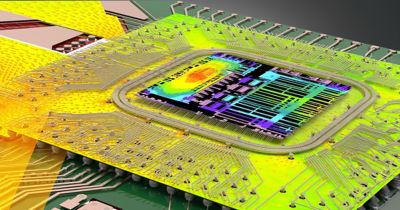-
United States -
United Kingdom -
India -
France -
Deutschland -
Italia -
日本 -
대한민국 -
中国 -
台灣
-
Ansys is committed to setting today's students up for success, by providing free simulation engineering software to students.
-
Ansys is committed to setting today's students up for success, by providing free simulation engineering software to students.
-
Ansys is committed to setting today's students up for success, by providing free simulation engineering software to students.
-
Contact Us -
Careers -
Students and Academic -
For United States and Canada
+1 844.462.6797

With the ever-growing size and complexity of computational fluid dynamics (CFD) simulations, high-performance computing (HPC) has become pivotal in industries ranging from aerospace to automotive. Traditionally, HPC relied on powerful central processing units (CPUs) to solve complex CFD simulations. However, as GPUs gain popularity for their exceptional parallel processing capabilities, they're redefining how engineers approach these simulations.
To prove the capabilities of GPUs, we tested a variety of our standard CFD benchmarking models using Ansys Fluent fluid simulation software. Two different models were solved on the Supermicro AS-8125GS-TNHR, a server that includes eight NVIDIA H100 Tensor Core GPUs. The first was internal flow through a 24-million cell gas turbine combustor model and the second was an external aerodynamics simulation of a 50-million cell automotive model. Both models were solved on one, two, four, and eight GPUs to measure speedup and efficiency.

Parallel speedup and parallel efficiency on H100 GPU for both models. The drop around eight GPUs is because the model is too small for an eight-CPU configuration. Versions used are from the 2024 R2 preview.
The Benefits of GPU-enhanced Simulations
The shift to GPUs, also on cloud-based platforms like Ansys Gateway powered by AWS software, offers multiple advantages:
- Efficiency: By handling many simultaneous tasks, GPUs reduce solver time, especially on large, complex models.
- Cost-effectiveness: The white paper highlights a significant cost reduction when simulations run on NVIDIA GPUs instead of traditional CPUs.
- Environmental Impact: GPUs also support sustainability goals by consuming less energy for intensive computations.
Real-world Impacts and Future Prospects
By leveraging GPUs like the NVIDIA H100 and A100 Tensor Core GPU on platforms such as Amazon EC2, engineers can process more design iterations, driving faster innovation and improving product quality. This enhanced computing power accelerates development, enabling more competitive and resilient products to reach the market faster.

Parallel speedup of the Ansys Fluent GPU solver running on Ansys Gateway powered by AWS software with A100 and A10 GPUs for all three cases running on 2024 R1 Fluent software.
In conclusion, the adoption of GPU-accelerated computing, especially for CFD simulations, represents a leap forward in simulation efficiency, cost, and environmental responsibility.
Read the full analysis into our application brief with NVIDIA and Supermicro here.
The Advantage Blog
The Ansys Advantage blog, featuring contributions from Ansys and other technology experts, keeps you updated on how Ansys simulation is powering innovation that drives human advancement.















